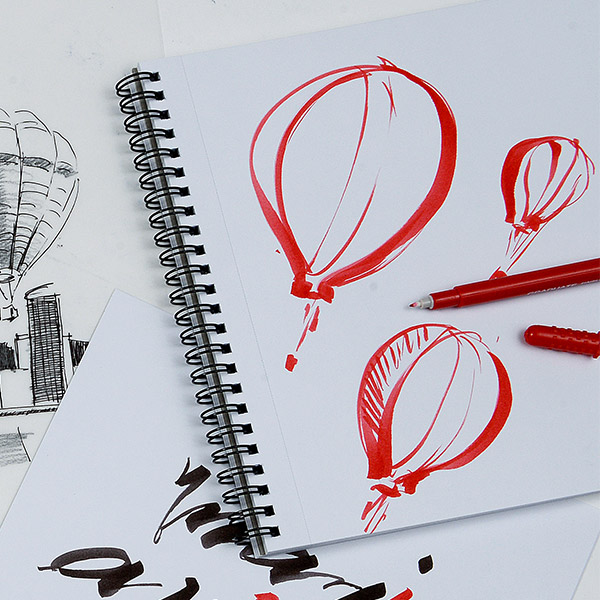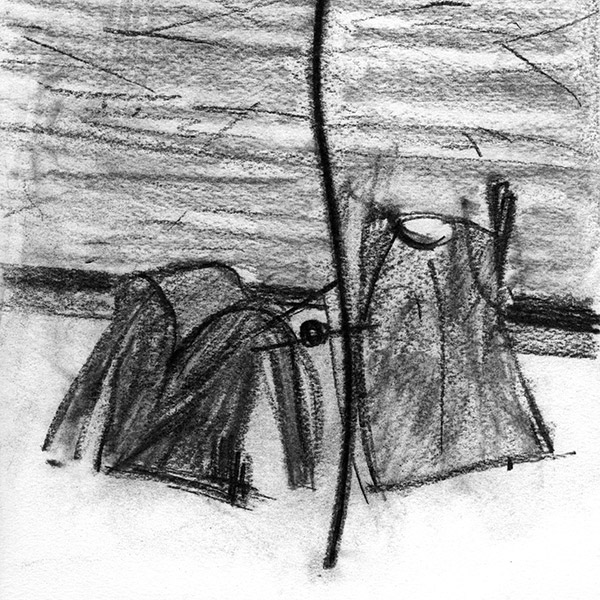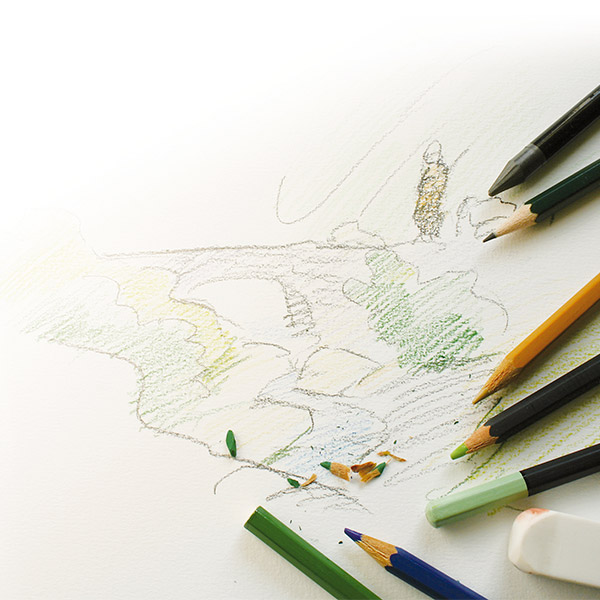Making a drawing with just a few pencil strokes isn't magic, it's sketching! Because this exercise is an art of its own. So where and how do you sketch? Here are a few hints...
- Home
- Expert advice
- Drawing: learning to sketch from life

1. Where should you sketch?
Try sketching both indoors and outdoors: the play of light is totally different. You'll be better off working on static subjects to begin with. You can move on to subjects in motion after a little practice.
Examples of static subjects: sculptures in a museum or a park, a landscape, a building, somebody sleeping, people at a concert or a theater performance, etc.
Examples of subjects in motion: animals at the zoo or an aquarium, children and joggers in a park, etc.

2. How do you do a sketch?
Here are some rules to follow:
Time yourself. Set yourself a time limit (5 to 10 minutes) per sketch. The time pressure will help you be more efficient and select the most significant information.
Don't push too hard! If a subject doesn't inspire you, try another one. Sketching requires spontaneity to keep your gesture flexible and spontaneous. If you ask yourself too many questions, you risk getting stuck.
Don't limit yourself to just one sketch of your selected subject. Approach it from every angle. By changing positions, you'll spot new details: point of view, light areas, perspective, etc.

3. Creating a values sketch
Quick and easy, this method consists of just sketching light and dark areas, without drawing contours. It lets you work on contrasts and volumes at the same time.
- Work with charcoal or graphite lead, creating hatching with the instrument's tip or solid areas with its side.
- Start with the lightest area, then add gray to the areas surrounding it, exaggerating the contrasts, as you go along.
- Keep going until the juxtaposition of grays shapes the subject.

4. Combining sketch and color
You have several options for including color in your sketch:
- Quickly add a few colors with color pencils or pastels, once the subject is sketched. You can also use a small box of watercolors: Don't forget to bring a little jar of water.
- If you don't have anything to use to add color, make notes on your sketch by writing out the colors you will need and where to put them. Example: red-bench, green-lawn, etc.
- Always make sure to write down the shade as a keyword. Example: peony red, teal green, sunflower yellow, etc.
Recommended product:
One Art Book™
See also :
Drawing
The 6 essential steps in drawing
Explore more tutorials on this technique
Drawing
The basics of good inking
Drawing
Drawing a Christmas Pin-Up
Drawing
The travel album
Drawing
Composing a still life
Drawing
Composing Landscapes
Drawing
Paint and Draw Outdoors
Drawing
Drawing: Secrets of perspective
Drawing
Color Basics
Drawing
Eraser drawing
Drawing
Hatch drawing
Drawing
Drawing: Human proportions
Drawing
Drawing: Stumping
Drawing
Drawing a face
Drawing
Drawing: Determining proportions
Drawing
Architectural drawing
Drawing
Drawing a line
Drawing
Drawing: Selecting your material
Drawing
Preparing your Drawing material
Drawing
Choosing your drawing media
Drawing
Drawing: Create a sketchbook
Drawing
Select your drawing paper
Drawing
Drawing: shading and light
Drawing
The 6 essential steps in drawing
